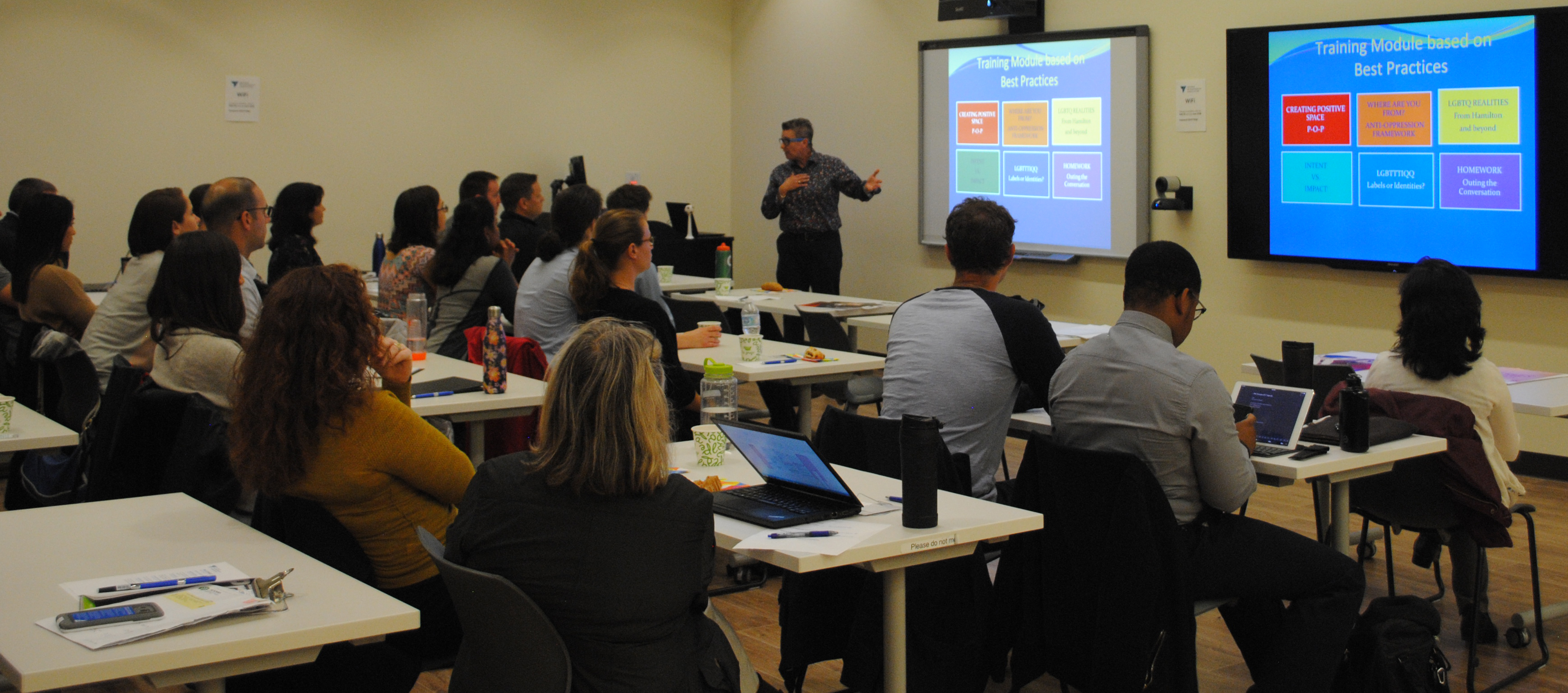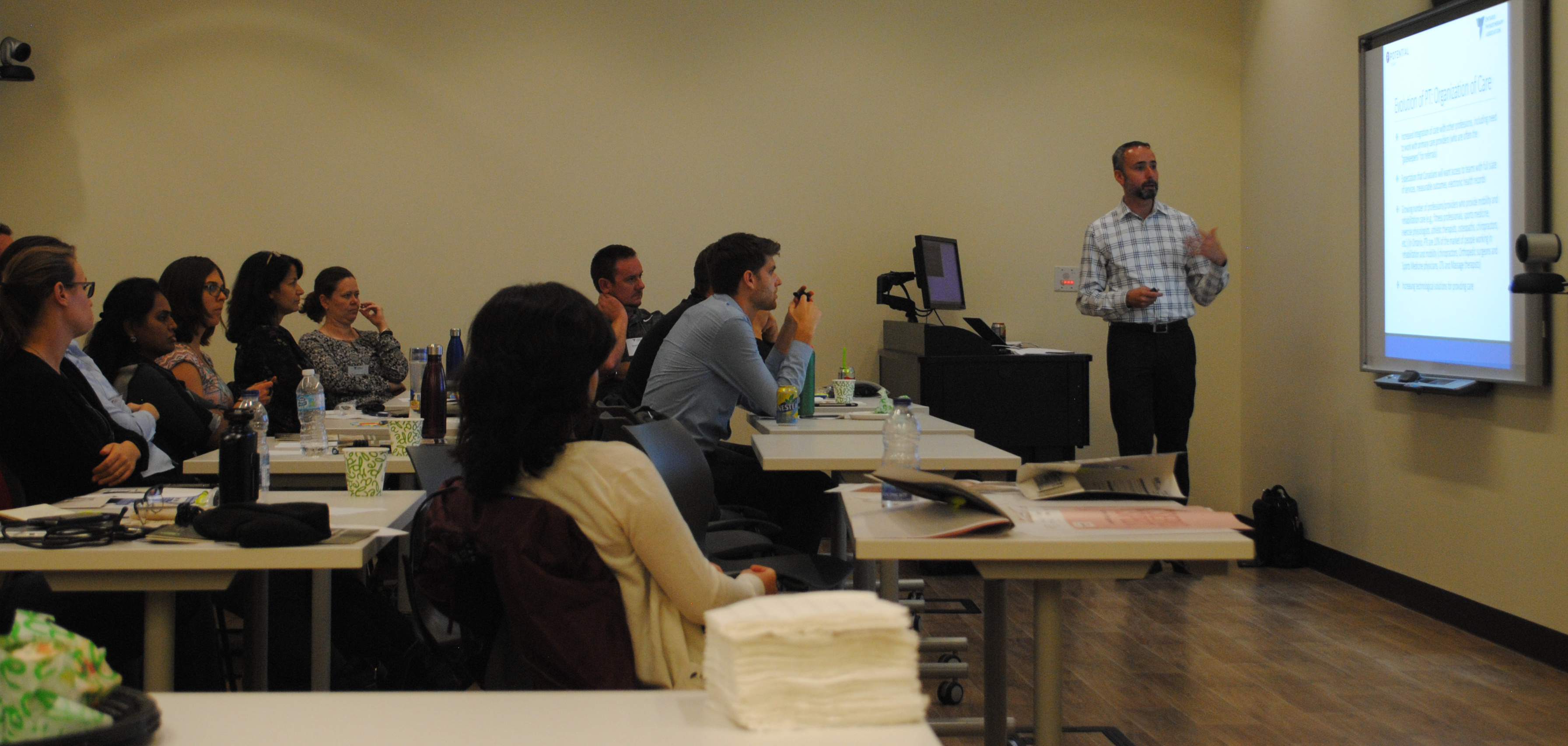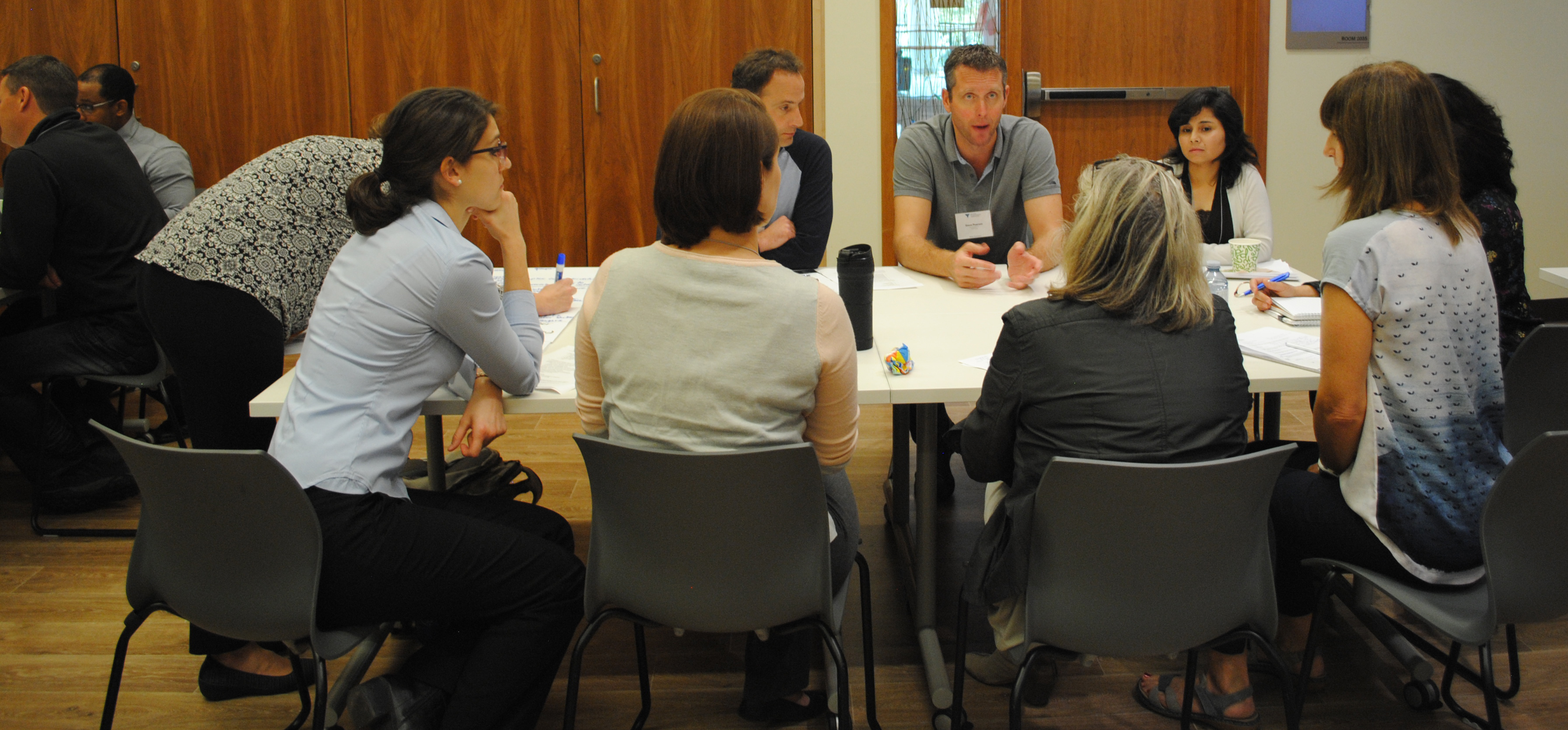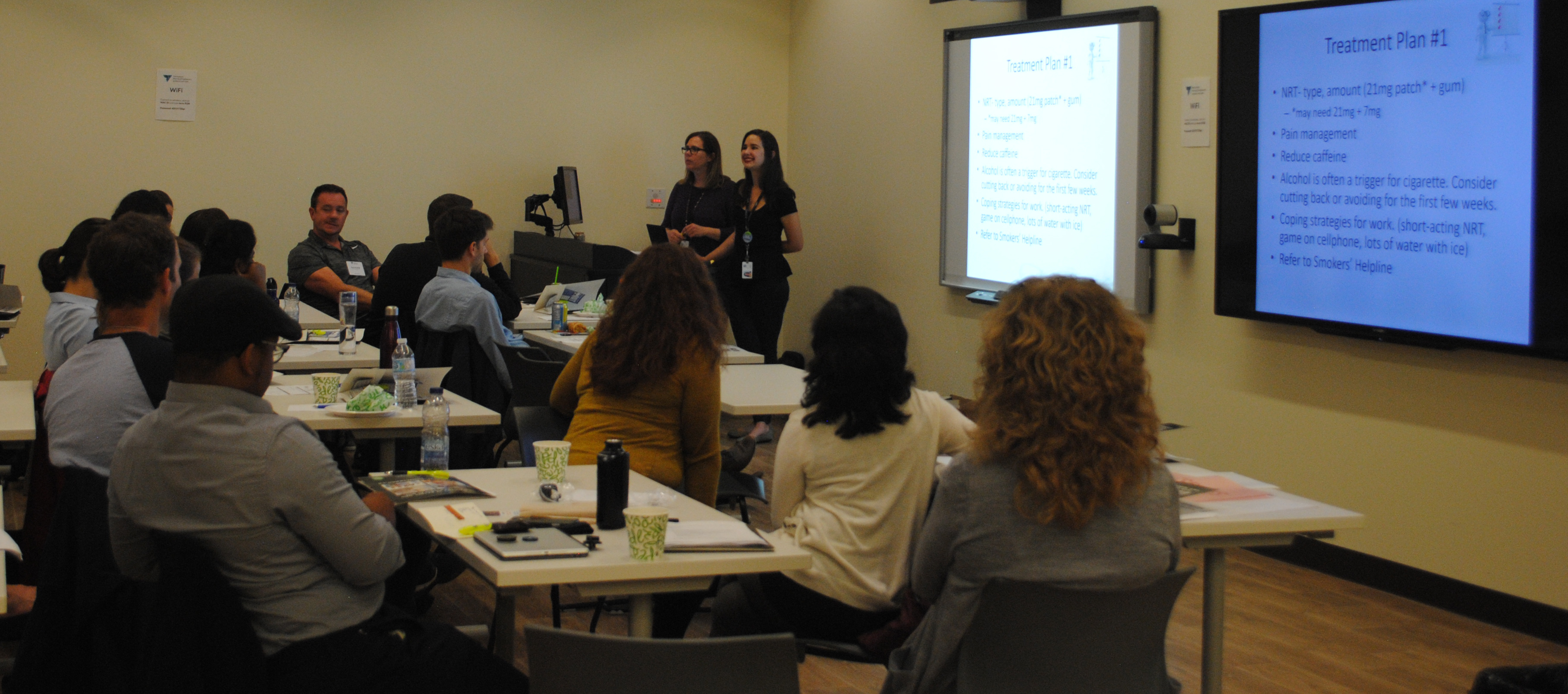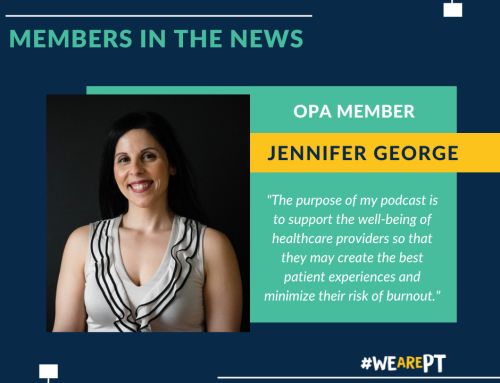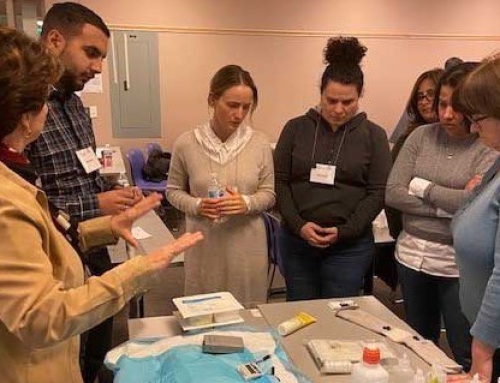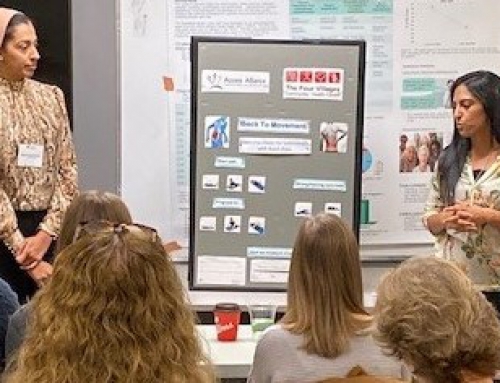Like many other professional development opportunities, the PHC Connect event taught me new skills to use immediately in my practice, drew on recent research, and provided a forum for participants to exchange ideas. The PHC Connect event, however, went a step further and helped each of us to reflect on how we consciously shape our practice and profession. We discussed how broader social inclusion can be embedded in our communication and assessments. We talked about the contributions physiotherapists can offer on health care issues like access to care, prevention strategies and addictions. And we shared ideas about how to move forward at different organisational levels – politically, in communities, through the OPA and in each of our practices.
The day started with Deirdre Pike asking us to think about how our words, procedures, and physio skills may carry implied assumptions about gender. Does your practice ask clients to identify their gender, and if so, how do you use this information? There’s no simple answer as to what options you should give for gender, but if we consciously reflect on our routines and language, we may find opportunities to be more inclusive and considerate of people at the margins. It can be a very productive step to making a physiotherapy space positive for people who identify as LGBTQ2+, but taking that step requires a reflective practice and specific training on how to examine your language and practices.
In small groups, we discussed some themes common to many primary care physiotherapy settings. Many people identified a need for group programs around exercise and chronic pain, and shared their experiences about setting up an evaluation framework to gauge effectiveness. Most often, such groups need to have the whole practice team on board and take an inter-professional approach. Cultural safety was another focus, and the need for inclusiveness – which goes beyond tolerance – echoed the stories shared by Deirdre Pike. Pain management has come up in popular media as well as many levels of health care including physiotherapy, and many conversations centred on how we can get the message to others that physiotherapists can be key partners in strategies to reduce the sequelae and impact of chronic pain. Not to get too meta, but professional education was also a topic for discussion, and it sounds like there is an appetite for opportunities specific to primary health care that include chronic disease knowledge and management and how to layer such learning onto one’s existing physio skill set.
One area not traditionally thought to be in the physiotherapy domain is smoking cessation. By including this presentation, the OPA demonstrated how physiotherapists can link our skills to prevention initiatives and general health concerns. Public health nurses from Hamilton presented information on strategies to assist with smoking cessation, and we learned about how to make a conversation about smoking specific to physiotherapy interactions, which in turn makes someone more likely to try to quit. Quitting smoking is not a pass/fail activity, but part of an ongoing process where each quit attempt is one step towards dealing with an addiction. Acknowledging the likelihood of, and planning for, a relapse is more productive than thinking one can quit on a first try.
We spent the afternoon working through questions that aim to guide the OPA’s next strategic plan. What is the essential value of physiotherapy? What has changed in the physiotherapy landscape in the last few years? What changes are specific to Ontario? What has the OPA done that has been helpful? What would you like to see the OPA do in the future? What are your hopes for the physiotherapy profession in the next five years? I’m not sure that I could sum up what people answered, but the conversations showed that many physiotherapists are engaged, creative, thoughtful and not afraid to think big.
By Amy Hondronicols, PHC Connect participant


